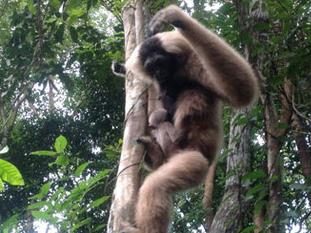Categories more
- Adventures (17)
- Arts / Collectables (15)
- Automotive (37)
- Aviation (11)
- Bath, Body, & Health (77)
- Children (6)
- Cigars / Spirits (32)
- Cuisine (16)
- Design/Architecture (22)
- Electronics (13)
- Entertainment (4)
- Event Planning (5)
- Fashion (46)
- Finance (9)
- Gifts / Misc (6)
- Home Decor (45)
- Jewelry (41)
- Pets (3)
- Philanthropy (1)
- Real Estate (16)
- Services (23)
- Sports / Golf (14)
- Vacation / Travel (60)
- Watches / Pens (15)
- Wines / Vines (24)
- Yachting / Boating (17)
Published
03/17/2015 by Flight of the GibbonIn October, 2014, a pair of endangered pileated gibbons, which were released into the forest near the Flight of the Gibbon Zipiline Eco-Adventure Canopy Tour location inside Angkor Archeological Park, Siem Reap, Cambodia, gave birth to their first baby in the wild.
The closely bonded parents were the first pair re-introduced into Angkor Park by the Wildlife Alliance of Cambodia, in December 2013, after being rehabilitated and raised at Phnom Tamao Wildlife Rescue Center (PTWRC) near Phnom Penh. Angkor Park is known for its ancient temples, the most famous of which is the largest, Angkor Wat. Since their release, the gibbons have been closely monitored while they roam freely in the jungle.
The re-introduction of gibbons, and the birth of this baby gibbon in particular, is a vital step towards the conservation of this endangered species. The re-introduction program inside Angkor Park is the first of its kind in Cambodia. It is estimated that less than 35,000 gibbons are left in the wild, primarily due to hunting and habitat fragmentation.
This reintroduction program hopes to increase and protect this species in its natural habitat. The gender of the baby gibbon is unknown, and may be for some time, since a young gibbon is nearly impossible to get close enough to, in order to examine them.
















